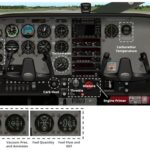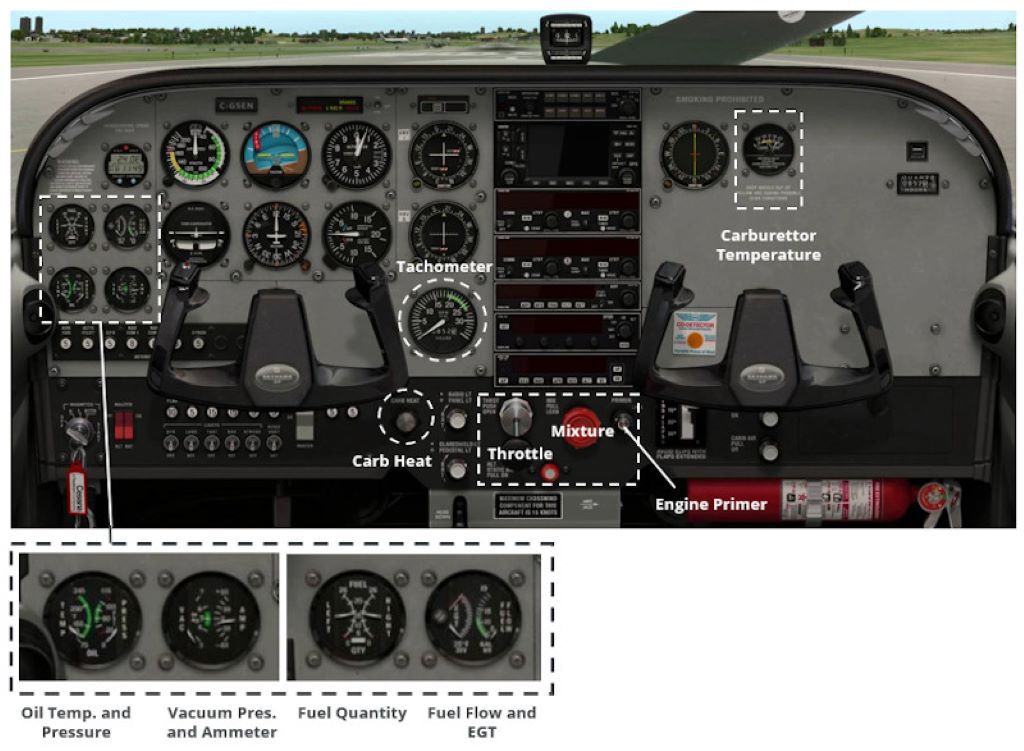In the intricate world of aviation, every instrument in the cockpit serves a critical purpose, providing pilots with essential information about the aircraft’s health and performance. One such instrument, the oil pressure gauge, is a fundamental component that plays a crucial role in monitoring the engine’s lubrication system. In this article, we will delve into the basics of aircraft oil pressure gauges, exploring their inner workings and the significance of their readings.
Understanding the Function of Oil Pressure Gauges
At its core, an oil pressure gauge is a relatively simple instrument that measures the pressure of the engine oil, crucial for ensuring the smooth functioning of an aircraft. This pressure is created by the oil pump, which circulates oil throughout the engine to lubricate moving parts, reduce friction, and dissipate heat. Maintaining adequate oil pressure is vital for preventing engine wear and ensuring its longevity. For more information on oil pressure gauge aircraft, you can read more about it in aviation manuals and maintenance guides.
The Mechanics Behind the Gauge
Most aircraft oil pressure gauges operate using a mechanical principle. A small tube, often a Bourdon tube, is connected to the engine’s oil system. As oil pressure increases, it forces the tube to straighten or uncoil. This movement is then transmitted through a series of gears and linkages to a needle on the gauge face, indicating the oil pressure in pounds per square inch (psi).
Interpreting Oil Pressure Readings
The oil pressure gauge typically features a green arc that represents the normal operating range for oil pressure. While specific values may vary depending on the aircraft and engine type, a typical range might be 40-80 psi. Readings within this range indicate that the oil pump is functioning correctly and the engine is receiving adequate lubrication.

Low Oil Pressure Warnings
If the oil pressure drops below the green arc, it signals a potential problem. Low oil pressure can result from several factors, including:
- Insufficient oil: A leak or excessive oil consumption can lead to low oil levels, causing a drop in pressure.
- Oil pump malfunction: A failing oil pump won’t be able to generate sufficient pressure.
- Clogged oil filter: A restricted oil filter can impede oil flow and decrease pressure.
- Excessive engine wear: Worn engine components can create gaps that allow oil to escape, lowering pressure.
High Oil Pressure Alerts
While less common, high oil pressure can also be a cause for concern. Possible reasons for high oil pressure include:
- Blocked oil passages: Obstructions in the oil system can restrict oil flow, leading to pressure buildup.
- Faulty pressure relief valve: If the valve responsible for regulating oil pressure malfunctions, it can cause excessive pressure.
- Cold oil: Thick, cold oil can create higher pressure until it warms up to operating temperature.
Pilot’s Response to Abnormal Oil Pressure
If a pilot encounters abnormal oil pressure readings, whether high or low, it is crucial to take immediate action. For low oil pressure, the pilot may reduce engine power, check oil temperature, and if necessary, land the aircraft as soon as possible. High oil pressure may require reducing engine power and seeking maintenance.
Importance of Oil Pressure Gauge Monitoring
The oil pressure gauge serves as a vital early warning system for potential engine problems. By regularly monitoring the gauge during flight, pilots can identify and address issues before they escalate into critical situations. This proactive approach not only enhances safety but also helps to extend the engine’s lifespan.
Conclusion
In the complex world of aviation, seemingly small instruments like the oil pressure gauge play an indispensable role. By understanding the principles behind this gauge, pilots can gain valuable insights into the health of their aircraft’s engine. Regular monitoring and prompt response to abnormal readings can help to ensure safe and efficient flights. Remember, the oil pressure gauge is more than just a needle on a dial; it’s a guardian of the engine’s well-being.
I hope this article provides a comprehensive overview of aircraft oil pressure gauge basics. If you have any further questions, feel free to ask!











